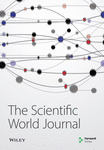Immunoglobulin Free Light Chain Dimers in Human Diseases
Abstract
Immunoglobulin free light chain (FLC) kappa (κ) and lambda (λ) isotypes exist mainly in monomeric and dimeric forms. Under pathological conditions, the level of FLCs as well as the structure of monomeric and dimeric FLCs and their dimerization properties might be significantly altered. The abnormally high fractions of dimeric FLCs were demonstrated in the serum of patients with multiple myeloma (MM) and primary systemic amyloidosis (AL), as well as in the serum of anephric patients. The presence of tetra- and trimolecular complexes formed due to dimer-dimer and dimer-monomer interactions was detected in the myeloma serum. Analysis of the amyloidogenic light chains demonstrated mutations within the dimer interface, thus raising the possibility that these mutations are responsible for amyloidogenicity. Increased κ monomer and dimer levels, as well as a high κ/λ monomer ratio, were typically found in the cerebrospinal fluid from patients with multiple sclerosis (MS). In many MS cases, the elevation of κ FLCs was accompanied by an abnormally high proportion of λ dimers. This review focuses on the disease-related changes of the structure and level of dimeric FLCs, and raises the questions regarding their formation, function, and role in the pathogenesis and diagnosis of human diseases.




